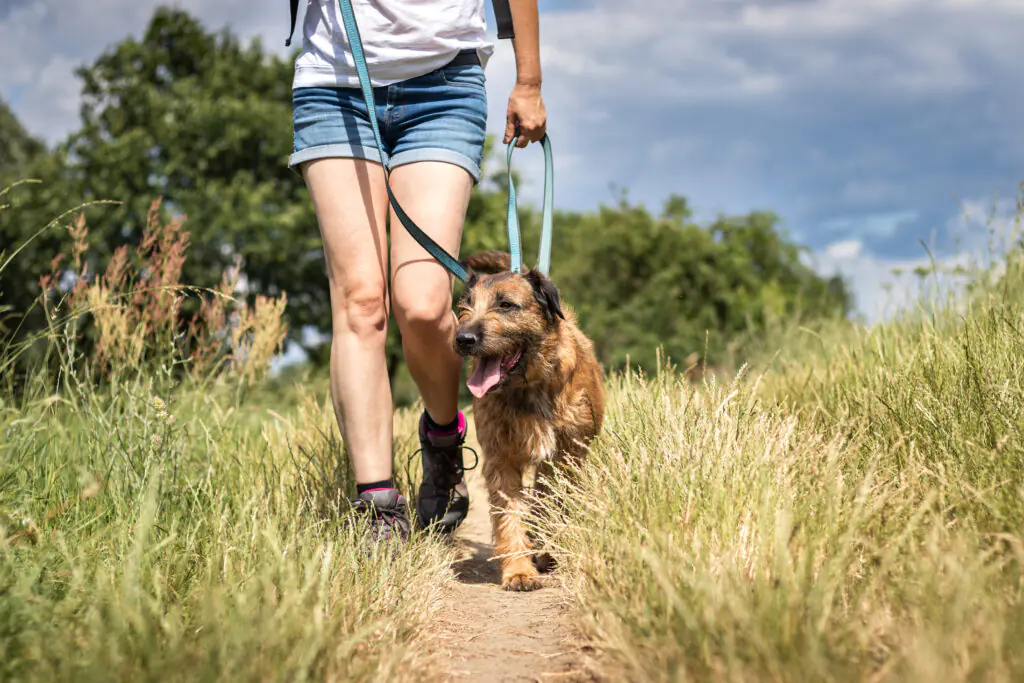
To ensure your dog is making the most of their walk, allow them to sniff around and take their time to explore. This stimulates their mind and requires immense concentration, meaning you’re tiring them out and entertaining them all at the same time!
Keep things exciting and change-up your walks and routes. Don’t feel the need to walk for hours on end if that’s not suitable for them. If they’re older or have compromised health, only do as much as they need and can. If you have a very active breed or a young dog, going little and often is a great way to keep them interested and exercised and, if possible, varying the length of your walks will provide great stimulation and enrichment.
Training – As Often as You Can!
Training doesn’t stop once your dog is no longer a puppy and walking your dog can provide some fantastic training opportunities that you just can’t mimic at home!
There are so many distractions when you’re walking your dog, from traffic, new sights and smells to other dogs and animals too! Regular walking means that these stimuli become second nature to your dog, and although it may seem daunting at first, eventually your furry friend will see this as simply day-to-day life – paying it all no mind.
Use these opportunities to implement your training methods. For example, if you ask your dog to sit and wait whilst waiting to cross the road, reward them when they get it right and practice some more if they break their sit or wait. They may be really good at this at home, but when you’re out in the big wide world, sometimes concentration lapses and this is the perfect time to practice before you move on to harder training, such as off-lead!
Try taking some bite-sized chewy boosts training treats to help with this real-world training. They are packed with joint-care goodness (including, Glucosamine and Chondroitin), tasty chicken, and are the perfect size to fit in a pocket or pouch for your travels!
Bonding Time – Just You and Your Doggo!
Bonding with your dog is really important, especially when it comes to implementing some of the training mentioned above. You must have trust between yourself and your dog and taking them for a walk will often help with this!
When you’re out and about, your dog trusts you to look out for them and protect them. The more you walk, the more they will start to learn that being with you is fun and safe, this makes them more likely to want to come back to you when you’re practising your recall!
Also, when you’re walking your dog, sometimes the unexpected can happen. If you’re in a situation where you need your dog to listen to you for their safety, this will be much easier to achieve if you have a strong bond and have practised your training in the outside world with distractions.
So, keynotes to remember when you’re out walking your dog:
- Bring treats or toys for training purposes
- Make sure you exercise them the right amount of time for your individual pet
- Bonding with your dog with increase trust and aid in training
- Have fun and enjoy your time together


